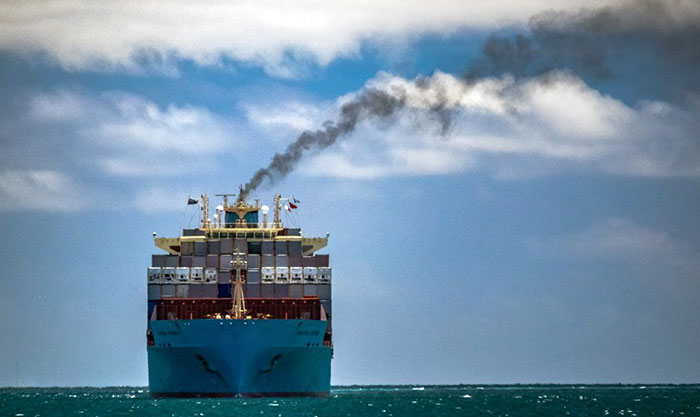VLSFO Management
/ by Capt. Vispy DadimasterFrom a point of view of loss prevention, we have taken into account practical issues already being experienced in the management of low Sulphur fuel, and the organizations experiences based on cases that have already occurred in the short period since the implementation of the IMO 2020 Fuel Oil Sulphur cap (Since 2020 Jan).
Irrespective of the objectives intended to be achieved through the implementation of the IMO 2020 Sulphur Cap, there is no denying that this has caused considerable issues arising out of potential contractual responsibilities and liabilities in respect of compliance, between the Ship-owners and its charterers.
It is quite clear that there are two principal methods of compliance with Sulphur Cap - the use of compliant fuel, eg LSFO with a Sulphur content which does not exceed 0.50% m/m, or alternative technology using high sulfur fuel (with a Sulphur cap of 3.5%. This high Sulphur fuel will have to employ an exhaust gas cleaning system (EGCS), commonly known as a scrubber.
Having said that there are still "grey" areas and considerations on the impact of the low Sulphur cap especially in view of either existing or future charter parties, with special reference to those that were in force prior and will be carried over post low Sulphur cap compliance date
This was particularly tricky in view that both the parcels of VLSO supplied to the vessel were seen compliant in all aspects when tested. It was thus left to our attending surveyor to carry out a factual and technical enquiry into whether the vessel's main engine (including her fuel system) was in a satisfactory state to receive, store and burn the fuel in the first place.
Notwithstanding the outcome of this investigation, it is important to highlight that even despite best efforts by fuel manufacturers and suppliers, technical problems brought about by certain characteristics of the new fuel oil are likely to be more frequent and more far reaching.
It is therefore of utmost importance for ship owners (and to an extent charterers) to be able to identify the concerns associated with VLSFO and have technical capabilities of the vessels Fuel management systems verified prior to the use of this fuel. (Most engine manufacturers have instructions in place for ships engineers to follow).
The below is intended to serve as an aid memoire extracted from our technical experience in investigating fuel management issues that have occurred so far:
PURIFIERSPurifiers are an important defense against contaminated fuel It is therefore thought prudent to consider evaluating the condition of the onboard purifiers more thoroughly through inspection by the maker or its authorized dealer. The use of portable cat fine testers may be worth evaluating since this will assist the ship crew in keeping a closer eye on this parameter in addition to purifier samples normally tested in the laboratory. Installation of an in-line monitoring system for cat fines may be another option worth exploring. With the changes in the type of fuel use, the importance of record keeping is of paramount. Importance factors, related to the purifier operational condition such as fuel specific density and the size of the gravity disc used, set time of sludge discharge, the flow rate, inlet temperature, etc. may help prove that the purifiers were operated properly.
FILTERING EQUIPMENTStrainers, filters and other similar equipment fitted as a part of a fuel treatment installation on board may require extra attention in case of stability or compatibility issues. The use of a 10 μm filter elements serving auxiliary engines as well as the main engines should be considered. Installation of a finer than standard 10 μm filter mesh may be considered after consultation with engine maker.
ENGINESIt is widely accepted that engine performance and power output depend on a number of fuel qualities such as energy content, ignition quality and combustion properties. While the quality of fuel and its properties cannot be changed by on board treatment, crew should nevertheless observe closely and record any adverse effect on engine operation, e.g. knocking, increased smoke emission, starting problems, unstable shaft revolutions and etc. Lubricity of low Sulphur fuel has been identified as another possible issue. Sulphur is stated to be one of the elements that contribute to fuel lubricity, lack of which in VLSFO and VLSFO may lead to premature wear of the rubbing components. Therefore, greater emphasis and frequency of used lube oil testing should be performed to provide an early indication of mechanical wear.
FUEL SULPHUR CONTENT ISSUESTaking on board fuel that later exceeds the requirements of the IMO Sulphur cap poses greater issues, not only in its management but also port state fines especially within Northern Europe coastal states and USA. Therefore, it is worth considering purchase of a portable fuel Sulphur content analyzer in order to be able to quickly check Sulphur content prior to the bunkering.
TANK AND SLUDGE PRODUCTIONSince IMO 2020 compliant fuel contains considerably less Sulphur than residual fuels, it can easily be contaminated if it is bunkered into tanks where there are remnants of high Sulphur fuel.
Apart from this issue, loading low Sulphur fuel into uncleaned tanks may also cause technical difficulties, and as per IMO MEPC.1/Circ.878., If such fuels are loaded into HSFO fuel tanks that have not been cleaned, there is a possibility that they could dissolve and dislodge sediments and asphaltic sludge in storage tanks, settling tanks and pipelines, potentially leading to purifier and filter operational issues and in extreme cases fuel starvation resulting in loss of power.
Thus In order to avoid accidental non-compliance and machinery problems it is advisable to clean bunker tanks and settling service tank from settled and adhering layers of old fuel. It should be noted that regardless of the tank cleaning method, fuel piping and other elements of relevant systems, such as fuel filters and fuel heat exchangers, will inevitably have to be flushed with compliant fuel for several days in order to ensure full compliance. In the case of manual cleaning it may be useful in engaging an external surveyor to verify cleanliness. Contrary to common perception, given that there is an increased likelihood of incompatibility and instability of fuels compliant with IMO 2020 Sulphur Cap, an increased sludge production has to be considered as an aspect of normal vessel's normal operation. Fuel tanks may require more frequent bottom draining, additional purification cycles and purifier sludge discharge at shorter intervals will unavoidably translate into greater amount of overall sludge generated. The importance of documenting all aspects of tank cleaning process cannot be overemphasized; logs and other documentary evidence may be required to protect ship owner's position in case of any dispute related to fuel Sulphur content and preparation for implementation of new regulation.
ENFORCEMENTBroadly speaking the signatory countries to MARPOL Annex VI are free to decide how they enforce the regulation and how non-compliance will be penalized.
This is tricky, since how non-compliance is dealt with will be wholly dependent on the jurisdiction. The usual methods include vessel detention (with the threat of banning orders for repeat offenders) and financial penalties. The level of financial penalty is likely to vary significantly across the globe and may escalate with repeated violations.
It should also be borne in mind that traditional fuel sampling methods must now be in compliance with the new 2019 Guidelines for on board sampling for the verification of the Sulphur content of the fuel oil used on board ships (MEPC.1/Circ.864/Rev.1). In essence there will now be 3 samples to consider:
- The MARPOL delivered sample taken at time of bunkering (recommended to be drawn from the receiving vessel's manifold).
- The in-use sample which is drawn as close as possible to the engine inlet.
- The not in-use onboard sample which is representative of the contents of a vessel's storage tank.
In this case, we have seen instances where the in-use sample was drawn from the bottom of a filter pot or a dead leg in the system. It is questionable how representative these samples are of the fuel in use and this practice should be avoided.
It is also understood that for enforcement requirements, guidelines for drawing representative samples for the actual fuel in use has yet to be developed by the IMO. Ship owners are advised to be prepared to challenge Port state control officers if they feel the sampling method adopted for enforcement isn't representative of the fuel in use.
However it is of paramount importance that documentation relating to VLSFO be recorded and maintained to the highest level; if the Port state control officers have "clear grounds" to escalate to a more detailed enforcement inspection, they are then most likely to carry out in-depth documentation checks, maintenance verification and fuel sampling/analysis, as well as assessing crew familiarity with the system and equipment.
About the Authors:A career spanning 22+ years in various operation and management positions within the Maritime and Shipping Industry, including 8+ years in Fujairah (Port Operation, Agency and Logistic Management), and in command of various types of vessels, including Offshore Dynamic Positioning crafts. Within the professional roles held, I have proven to be result oriented, decisive, possess tremendous interpersonal skills, and am technically oriented My entrepreneurship skills have enabled me to lead and managed teams up to 25 people successfully, achieving challenging objectives, within challenging environments, with an aim to create a positive outcome and impact.
Chief Engineer Ramesh Krishnan
An extensively experienced maintenance
engineering professional onboard
merchant ships, on global as well
as coastal voyage ships.
No tags for this post.





Leave a Reply
Want to join the discussion?Feel free to contribute!